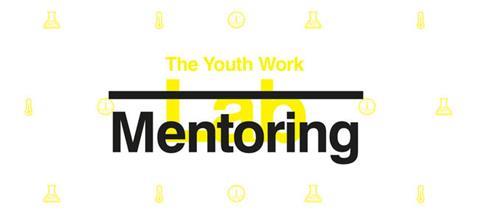
The theory
Mentoring is a core part of many youth work projects. For young people to have time away from the group with a supportive, encouraging mentor is invaluable. Mentoring sessions offer the chance for young people to get targeted support. It is chance to for them to grow personally, socially and spiritually and to take the opportunity to be supported in their struggles.
The mentoring relationship is built on mutual trust and respect, openness and honesty. where each party can be themselves. It is a powerful and emotional relationship. The mentoring relationship enables the mentee to learn and grow in a safe and protected environment. The quality of the relationship is crucial to successful mentoring. Many mentoring programmes offer a trial period in order for mentor and mentee to get to know one another; if either are not comfortable, the mentoring will not be sustained. While mentoring isn’t always built upon a specific theory, there are many theories that propose explanations for the positive effect of mentoring.
Social support theory
Since the 1980s, social support theory has been a dominant perspective used to illustrate the impact of having supportive individuals in the lives of young people. Social support theory proposes that throughout a young person’s lifespan they are surrounded by many individuals, including non-parental adults, who provide varying degrees of social support. This social support is directly linked to a young person’s wellbeing and also works as a buffer against risk-taking behaviours. The support that young people gain from these non-parental adults can include instrumental support (eg. transportation, financial aid), emotional support (offering a listening ear), informational support (providing advice and guidance) and esteem support (affirming a young person’s sense of value). Mentoring provides the opportunity and a formal process for a non-parental adult to be a part of a young person’s life. As is much quoted: ‘it takes a whole village to raise a child’.
Social network theory
Closely linked to social support theory is social network theory. In social network theory there is a distinction between networks formed of strong bonds, which are associated with family and close circles of friends, and networks formed of weak bonds which are more commonly associated with more distant contacts and acquaintances. What is interesting is that the most valuable contacts are not those with whom there is a strong bond; rather, weak-bonded networks which are large and diverse increase a young person’s access to information, support and opportunity. In mentoring, especially for disadvantaged young people, mentors can serve as bridges, enabling young people to access these networks. In this form, the mentor acts as an encouragement and support as young people venture out to explore these new networks. It might take the form of accompanying young people to a college open day or providing a connection for work experience in a field they have no contacts in. Successful mentoring using social network theory provides young people a platform from which to access and thrive in a new range of opportunities.
Resilience theory
Despite the adversities and risks inherent in growing up in disadvantaged circumstances, some young people are able to overcome this and thrive. This has led researchers to develop a theory of resilience. Researchers noted that one significant factor in the lives of those young people who overcame their disadvantaged circumstances was the presence of a consistent care giver from within the community who provided support and encouragement. Resilience theory suggests that ‘the rich get richer’– the more resources you have the more likely you are to succeed in overcoming the odds that confront and challenge in everyday life. So the supportive relationship of mentoring provides young people with an additional resource with which to face life’s challenges, but it might not be the only one. In resilience theory it is a mix of supportive relationships that promote resilience, not just the dependence on one key figure. What is key is that interactions with a mentor are a regular part of mundane daily life rather than artificially ‘engineered’ and occasional. In this sense a mentor is ideally situated within the current network of the young person’s relationships. Resilience theory promotes a more informal approach to mentoring that happens as non-parental adults invest in a young person already in their path rather than a formal mentoring process.
Mentoring and discipleship
While it would seem easy to combine discipleship and mentoring, it would also be foolish. A disciple is a follower of Christ. In discipling, it is the responsibility of disciples to help each other grow as followers of Christ. In other words, disciples disciple disciples in a process called discipleship. From Christ’s first words of invitation to ‘follow me’, the picture of discipleship is of leader and follower. As those at the start of the Christian story looked to Christ, we too look to him and to those who are mature in their walk of faith so that they may guide and correct our path. Akin to a mountain guide, we place our faith and trust in those who have gone before. The journey of mentoring however is more like accompanying. Mentors walk beside their mentees and although mentors may provide counsel and advice, mentees choose their path on their terms. In mentoring you may be called upon to be the compass, map or anchor, yet the direction is set by the mentee. The aim of discipleship is to mirror Christ, and in that a disciple needs an understanding of Christ in order to follow those directions. Mentoring on the other hand is far more suggestive. A mentor suggests possible paths and directions to take, but knows that the person being mentored needs to make their mind up for themselves.
The experiment
Formal vs. informal mentoring

Dan Potter, project leader, Thornbury StreetSpace
The formal approach
I sit and introduce myself to a young man who recently discovered he is soon to become a dad. In the time preceding and following the birth of his baby girl the subsequent mentoring sessions followed this lad’s roller-coaster ride of emotions: full of nerves and fears, hopes and dreams. During our final sessions together he described how he had benefitted from the one-to-one support through what had been a time of shock, change and challenge. On finding out he was to become a father, he had initially dealt with things badly, jeopardising relationships with some of his friends and family, but in working towards the goals we set together, he has become more emotionally stable, repaired his relationships and begun happily accepting support from his family and friends while he brings up his daughter.
In this example there were many benefits of a more formal model of mentoring: the routine of meeting weekly for an allocated amount of time, the reassurance of confidentiality, the constancy of working towards set goals. For some, laying such boundaries might sound too rigid or cold, perhaps hindering the natural flow of a relationship, but in this case these were all things which gave a sense of stability throughout an unpredictable time for this young man. We used the ‘seven clusters of capabilities’ tool together (used within the StreetSpace mentoring framework) as he assessed himself across the seven review areas of development.
The informal approach
Mentoring is an extremely broad term and there are less formal ways in which mentoring can take place. With unspecified goals, unknown outcomes, and undefined agreed meeting times, this can seem a little ad-hoc, but as it is often longer-term, and normally happens with ‘self-selected’ mentees, there are certainly times where building a ‘more natural’ mentoring relationship can work.
An example of this is a young man who we connected with at the local skate park during our detached work. He is slightly older than the rest of his group and would probably hate the idea of having a mentor because ‘that’s for kids!’ As I (awkwardly) accepted another fist-pump from him after seeing our new skate equipment installed (an issue which he raised himself at a local Council meeting) I appreciate the relationship that we’ve built and think back along the journey that I’ve seen him on: building in self-confidence as I encourage him to take a lead in the skate park’s user group, growing in self-understanding as we chat on the way to various skate parks and developing his self-esteem and skills through helping organise and host a SkateFest event.
Whatever the form of the mentoring, young people seem to crave having someone who is willing to invest in them. Taking referrals from community partners we have run over 200 more formal mentoring sessions during the last year and only once has our offer of support ever been turned down. We find that this one-to-one work is really where the rubber hits the road as young people find the space to be open and honest, tackle some of the hard questions that they face, and become more like the people they want to be.
Experiment yourself:
Whether or not you run a mentoring programme, it’s always good to takes some time out for personal reflection. Considering the three theories of social support, social network and resilience - who in your own life has taken a mentoring role? Write down the names of those mentors and how they supported you. If you ran some form of mentoring programme with the list you generated, think about how the way you’ve been mentored influences how you do your mentoring.
Take the time to consider whether the mentoring you’re doing is the best approach for the young people you work with. In Dan’s example he is using different approaches depending on the context. Where might you want to try a different approach? What do you do that might classify as informal mentoring? Have you thought about this informal relationship in those terms before? If not, why not consider writing a mentoring plan for that young person? You may not want to share it with them to preserve the informality, but it may help you consider how that relationship develops and your role within it.











































